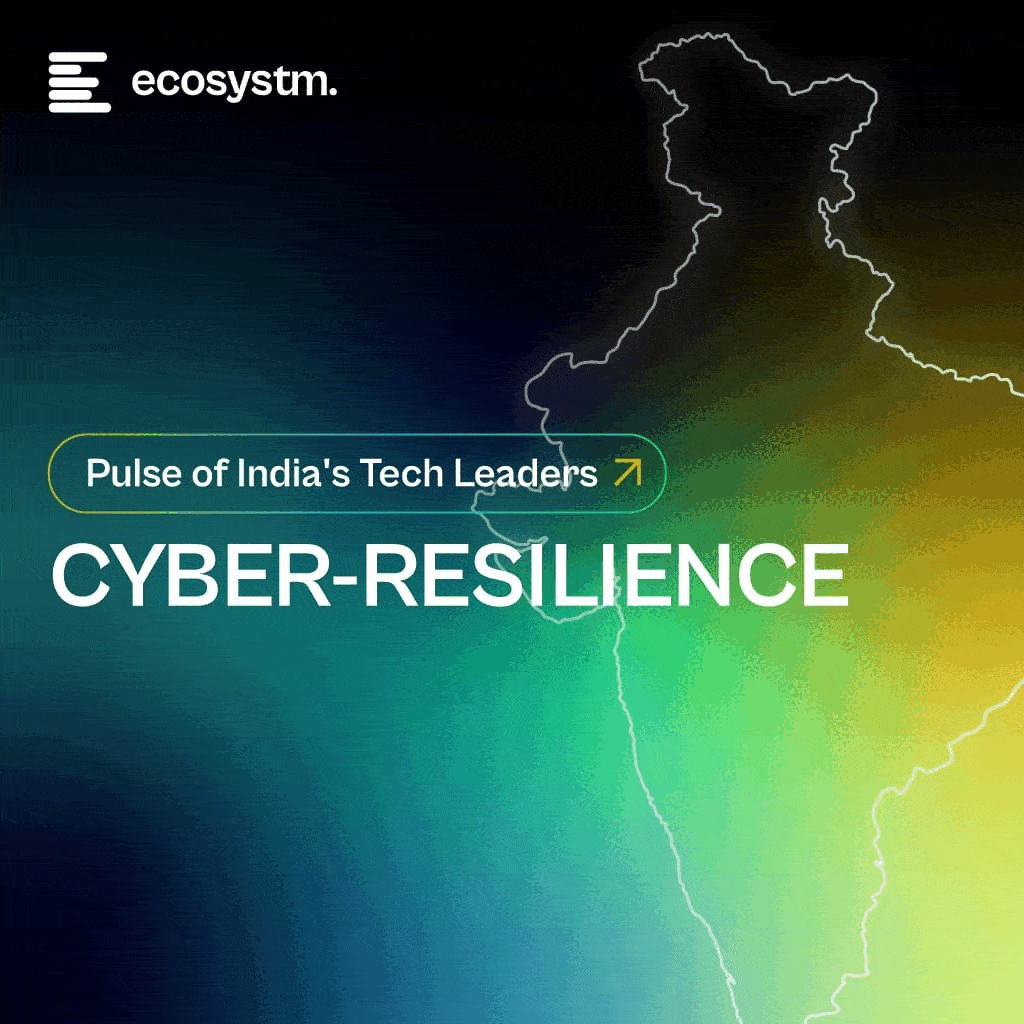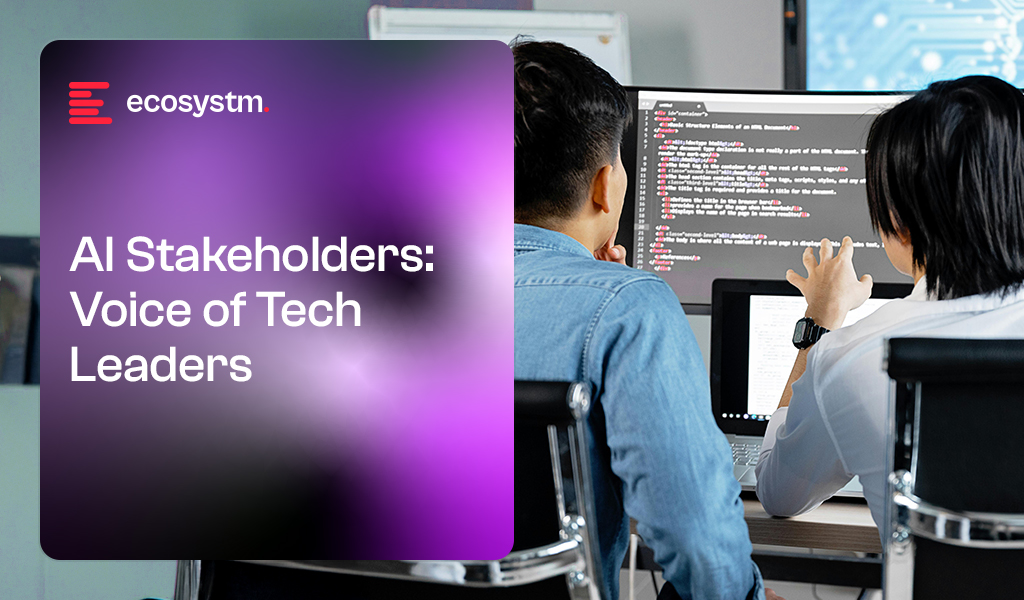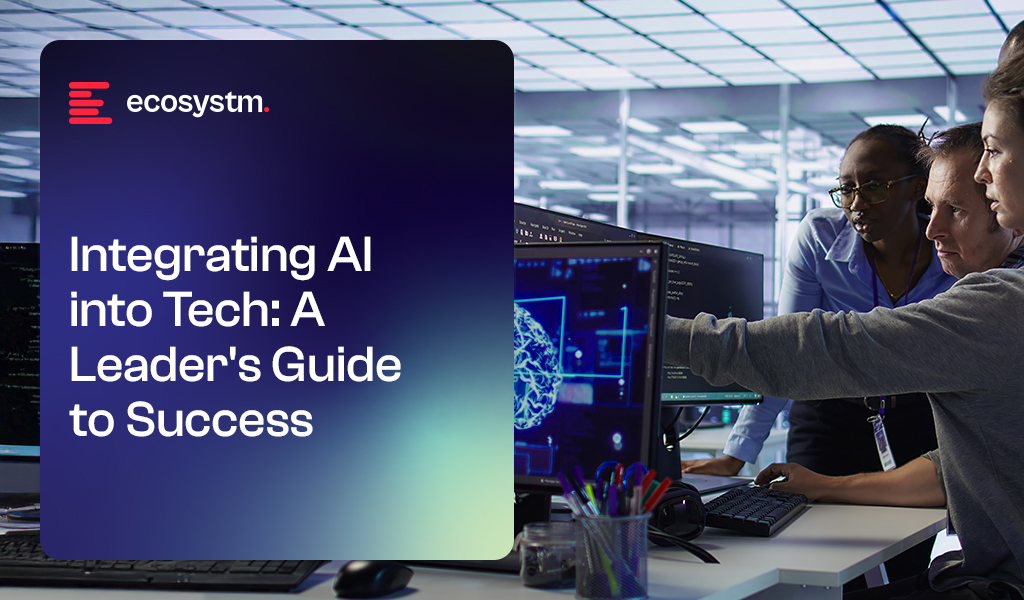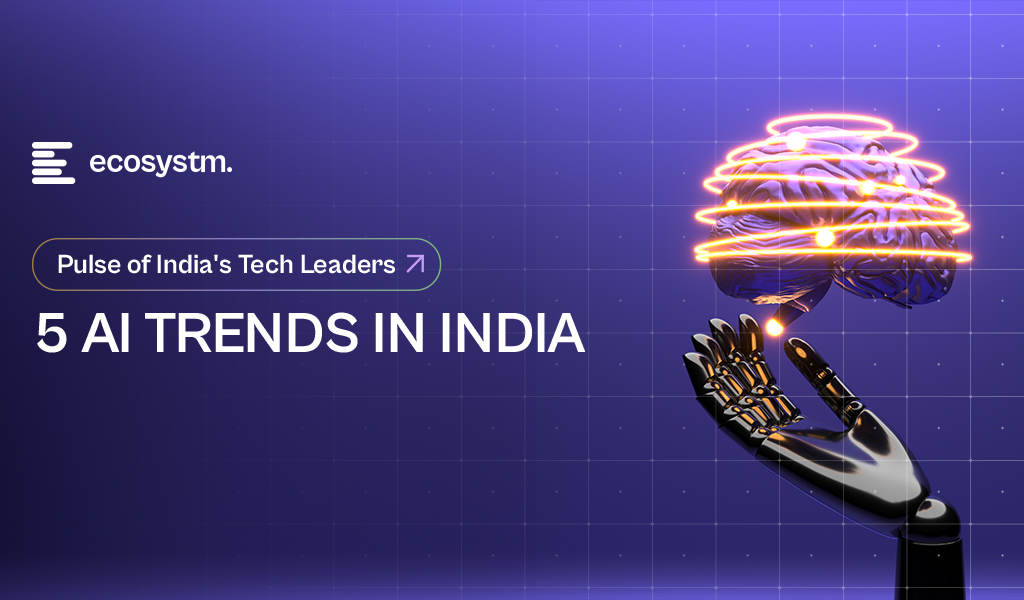AI’s biggest impact in an organisation is on the tech teams.
From automating IT support to optimising infrastructure, development, and security, AI is transforming the way tech teams work. IT leaders are leveraging AI to boost productivity, cut costs, and drive innovation at scale.
Here’s how tech leaders are coming together to push AI initiatives forward.
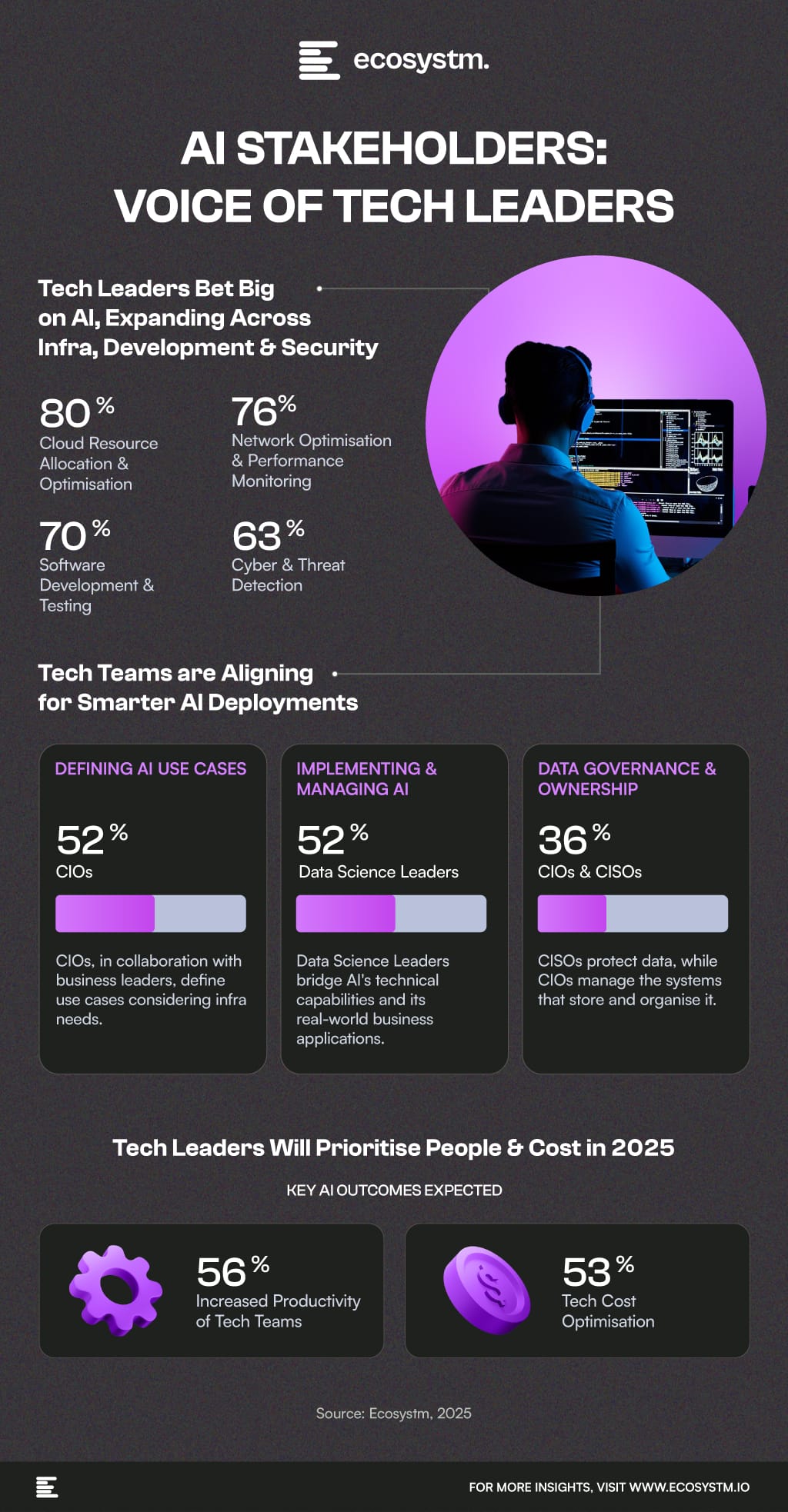
Tech leaders, to create business impact with AI, stop viewing it as just a tool – it demands the right strategy and foundation.
Maximising AI requires focus on:
• Identifying capability gaps & setting realistic goals
• Building skilled AI teams
• Enabling data ownership for business units
• Embedding AI governance early
• Forming strategic partnerships & managing AI holistically
Discover how AI can be the cornerstone of your transformation journey.
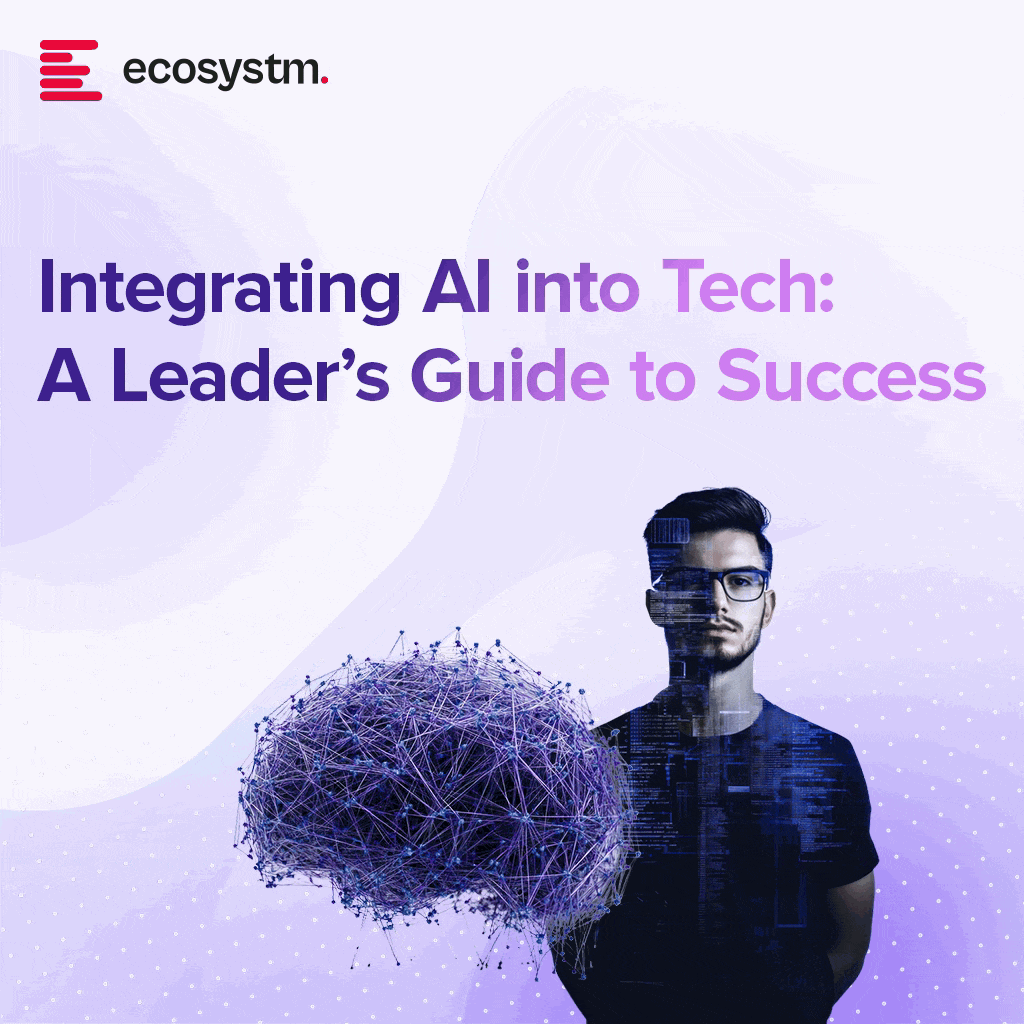

AI has rapidly transitioned from a theoretical concept to a strategic imperative, reshaping core business functions and fundamentally altering the operational landscape of technology teams. By empowering teams with increased autonomy and data-driven capabilities, organisations are positioned to realise substantial value and achieve a decisive competitive advantage.
The most profound impact of AI can be observed within tech teams. AI-driven automation of routine tasks and streamlined operations are enabling technology professionals to refocus their efforts on strategic initiatives. This shift transforms the technology function from a reactive system maintenance role to a proactive developer of intelligent infrastructure and future-oriented systems.
Ecosystm research reveals key findings that Tech Leaders need to know.
Click here to download “AI Stakeholders: The Tech Leader’s Perspective” as a PDF.
Strategic AI Deployment
Ecosystm research reveals a clear trend: technology leaders are strategically investing in the immense potential of AI. While 61% currently leverage AI for IT support and helpdesk automation, there is a clear aspiration for broader deployment across infrastructure, development, and security. 80% are prioritising cloud resource allocation and optimisation, followed by 76% focusing on network optimisation and performance monitoring, along with significant interest in software development and testing, and cyber threat detection.
One Infrastructure Leader shared that the organisation uses AI to dynamically scale infrastructure while automating maintenance to prevent outages. This approach has led to unprecedented efficiency and freed up their teams for more strategic work. The leader emphasised that AI is helping to tackle complex infrastructure challenges and is key to achieving operational excellence.
A Cyber Leader discussed the role of AI in enhancing their defense capabilities. While not a “silver bullet,” it is a powerful tool in the fight against cyber threats. AI significantly enhances threat intelligence and fraud analysis, complementing, rather than replacing, security team efforts. This integration has helped streamline security operations and improve the ability to respond to emerging risks.
AI is also making waves in software development. A Data Science Leader explained how AI quality control tools have reduced bug counts by 30%, enabling faster release cycles and a 10% improvement in internal customer satisfaction.
Collaborative AI Implementation: A Cross-Functional Approach
The successful implementation of AI requires a collaborative, cross-functional approach. The responsibility for identifying viable use cases, developing and maintaining systems, and ensuring robust data governance is distributed among various technology leadership roles. CIOs, in collaboration with business stakeholders, define strategic use cases, considering infrastructure requirements. Data Science Leaders bridge the gap between AI’s technical capabilities and practical business applications. CISOs safeguard data, while CIOs manage the systems that store and organise it.
Navigating Challenges, Prioritising Strategic AI Initiatives
Despite the acknowledged potential of AI, technology leaders must address several critical challenges, including use case prioritisation, skill gaps, and the development of comprehensive AI strategies. Nevertheless, the strategic importance of AI will continue to drive its prioritisation in 2025. Key anticipated outcomes include increased technology team productivity (56%) and technology cost optimisation (53%).
AI is no longer a supplementary tool but a core strategic asset. By strategically integrating AI, technology teams are transitioning from operational support to strategic innovation, building the intelligent systems that will define the future of business.

India has the world’s third-largest fintech ecosystem. However, for this ecosystem to truly flourish, robust partnerships with BFSI organisations are essential.
How do BFSI organisations in India strategically align with fintechs and what are the major collaboration challenges they face? The Big5 CIO Priorities India ’24 Study sheds light on some of these trends.


Wondering how India’s tech leaders are navigating the dynamic world of artificial intelligence (AI)? The latest findings from the Big5 CIO Priorities India ’24 Study offer a glimpse into the strategies employed by these industry giants.
According to the study, there’s a noticeable surge in investments in AI, highlighting a strategic shift towards embracing cutting-edge technologies. From streamlining operations to enhancing customer experiences, AI is being harnessed across various sectors to drive innovation and efficiency.
Tech teams across enterprises are not just dabbling but actively embracing AI, integrating it into their core operations. This proactive approach underscores a recognition of AI’s transformative potential and its role in shaping the future of business.
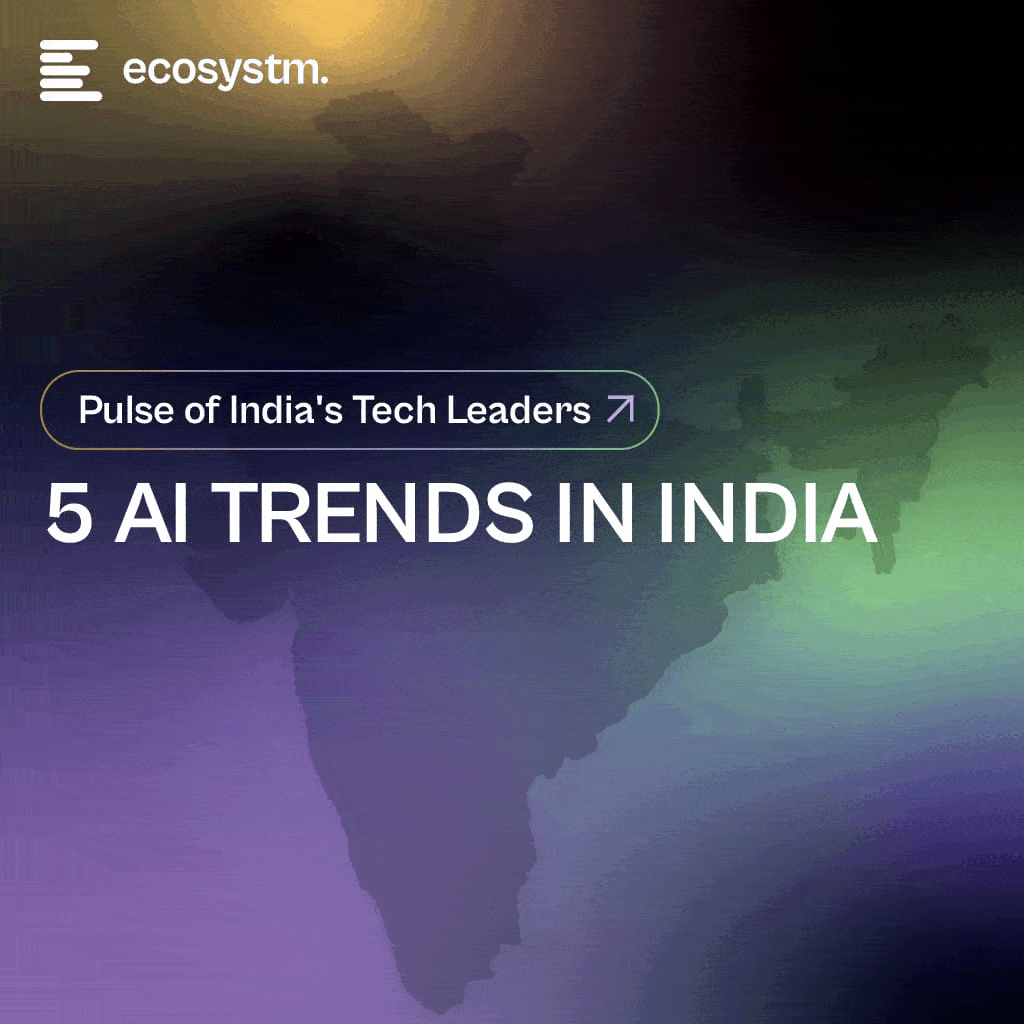

Where is cloud adoption headed in India? Dive into the insights from the Big5 CIO Priorities India ’24 Study to uncover trends in hybrid and public cloud adoption, and other crucial aspects of organisations’ cloud strategies.
According to the study, a significant 80% of organisations have embraced a hybrid, multi-cloud strategy, showcasing a strategic blend of private and public cloud services. Despite this, there remains a robust interest in public cloud solutions, highlighting the appeal of their scalability and flexibility.
Additionally, the study reveals that 69% of organisations prefer a cloud-first approach when introducing new services. This shift signifies the growing recognition of cloud computing as a foundational pillar for innovation and growth among Indian businesses.
As India’s digital landscape continues to evolve, understanding these cloud adoption trends becomes paramount for organisations looking to stay competitive and resilient in an increasingly digital-first world.


The Big5 CIO Priorities India ’24 Study reveals the pulse of India’s top technology leaders, offering insights into the country’s technology roadmap.
The study reveals that while a substantial 86% of organisations plan to augment their investments in cybersecurity in 2024, a comparatively modest 30% will prioritise SecOps and security analytics.
